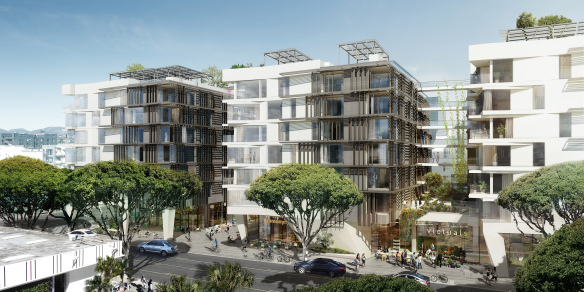
Governor Jerry Brown’s proposed budget, released earlier this week, has some good news and some bad news for housing in California.
California remains in the throes of the worst housing shortage in generations and Brown’s proposed budget made it clear that state funding of affordable housing will not be the way out of this crisis.
The budget proposal explicitly notes that money for affordable housing will not come out of the State’s General Fund and no new funding sources will be available without significant reform to local laws that currently stand in the way of housing growth [PDF].
That has some lawmakers concerned.
Assemblymember Richard Bloom (D-Santa Monica), who worked closely with the Governor’s office last year on legislation that would have streamlined the approval process for housing, said, “I regret that this year’s budget features neither specific policy proposals nor funding for affordable housing, both of which Governor Brown provided important leadership on last year. California’s housing crisis continues to escalate and it is imperative that the legislature and governor make housing a priority this year and work together to help California meet its severe housing shortage.”
Still, Brown’s budget proposal does outline in broad strokes, an approach to addressing the housing crisis.
“The Administration is committed to working with the Legislature on the development of a legislative package to further address the state’s housing shortage and affordability pressures. Such a package should include additional reforms and any new funding should not rely on the General Fund,” the budget document reads.
“Because it is counterproductive to develop a new funding source for affordable housing under a system that increases time, risk, and cost, the Administration puts forth the following principles,” it says.
At the top of the list of those principles is, “Reduce local barriers to limit delays and duplicative reviews, maximize the impact of all public investments, and temper rents through housing supply increases.”
Last year, Governor Brown’s efforts to pass legislation attached to his budget that would do precisely that ultimately failed in the face of strong opposition by labor and environmental organizations.
If Brown’s efforts had succeeded last year, he was willing to free up $400 million for affordable housing. This year’s budget proposal notes that that money is now off the table.
Still, this year’s budget proposal includes a carrot for those municipalities that are actually producing housing: “Those jurisdictions that meet or exceed housing goals, including affordable housing, should be rewarded with funding and other regulatory benefits.”
And a stick for those that don’t: “Those jurisdictions that do not build enough to increase production should be encouraged by tying housing construction to other infrastructure‑related investments.”
Local opposition to housing growth could be disastrous for cities. In November, Santa Monicans voted down a draconian anti-housing measure that would have required a vote on nearly all projects taller than 32 feet, essentially killing any real opportunities for housing growth in a city that already has pretty slow-growth policies firmly in place. While the measure was defeated by nearly an 11-point margin, there are already rumblings of a “son of LV” being placed on a future ballot.
In California’s largest city, Measure S, or the so-called Neighborhood Integrity Initiative, is on the ballot this March. Measure S would result in a two-year moratorium on permits for projects that require an amendments to the General Plan, including parking reductions for projects near transit and higher densities in the city’s jobs-rich areas.
It would also require that all the city’s community plans be updated without any upzoning, essentially hobbling the city’s ability to allow more housing growth along the growing regional transit network, further exacerbating traffic and housing affordability problems.
Add to that the inability of the city to access state infrastructure funding due to the draconian restraints on housing growth of Measure S, if it passes, and Los Angeles could find itself in big trouble.
“To address the statewide housing shortage more units need to be built at a lower per‑unit cost. Local factors that drive up per‑unit costs include permitting and impact fees, delays in permit approvals, and parking requirements. These cost drivers can add tens of thousands of dollars to the cost of constructing housing,” the budget reads.
Last year, there were several pieces of legislation that nibbled away at the edges of California’s dysfunctional local housing growth politics and assured funding to help the state’s most vulnerable residents, including AB 1618 and AB 1628, known as the No Place Like Home program, which authorizes $2 billion to address homelessness for people with mental health needs through the provision of permanent supportive housing. The 2016 budget also included $149.4 million for housing and homelessness programs and SB 1380 and AB 2176 created a Homeless Coordinating and Financing Council.
AB 2442, AB 2501, and AB 2556 all strengthened the state’s density bonus laws while SB 1069 and AB 2299 essentially made it easier for people to build accessory dwelling units (AKA granny flats) on their property.
Still, the budget proposal is clear. The only way California is going to become affordable again to middle- and lower-income people is if local jurisdictions do their part to allow for significant new housing growth.
